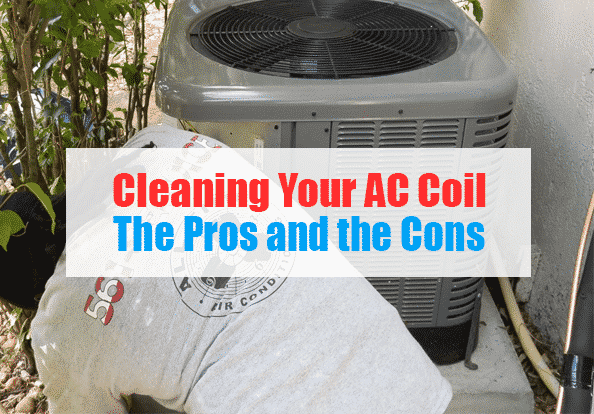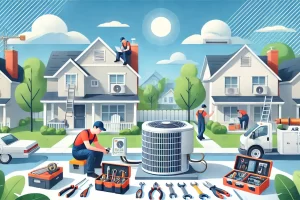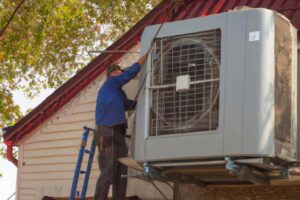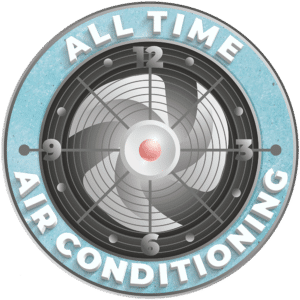How to Clean AC Evaporator Coils
The air conditioner helps keep our homes warm and comfortable regardless of the weather outside. Like any other mechanical equipment, they wear out with continued use and require some parts to be repaired or replaced over time. Experts thus recommend getting your HVAC unit serviced by an expert at least once per year and other simple maintenances. When servicing and caring for AC units, most people mainly focus on the system’s main parts and components, forgetting or leaving evaporator coils and other parts out of their direct view. Unknown to them, evaporator coil maintenance is as crucial as other unit parts. A neglected evaporator coil can take a toll on the entire system’s performance, affecting its overall performance and lifespan. It would thus be advisable to pay particular attention to your unit’s evaporator coils whenever it’s time for yearly preventative maintenance.
What Role Do Evaporator Coils Play?
Evaporator coils play a crucial role in trapping heat inside the house and redirecting it outside to the outdoor unit. The coils are mainly copper and aluminum fins that help improve heat transfer. Evaporator coils are primarily attached to the indoor air unit, unlike condenser coils found in the outdoor unit. Evaporator coils help keep the room/house cool by extracting heat from the air indoors, producing a cooling effect. They are thus responsible for keeping your home/office cool and comfortable despite blistering temperatures outside.
The evaporator coils also help dehumidify the space as the air cools down. This happens when humid air comes into contact with the cold fins forming water droplets. The coils trap water which is then drained into the drain pan for easier removal from the house.
When/if neglected, dirt, grime, and dust can collect on the evaporator coils impacting their performance. Evaporator coils are almost always damp (due to the dehumidification process), thus a magnet for foreign particles floating in the air, including pollen, dust, and other materials. Dirty, malfunctioning, or absence of air filters are some of the factors that make indoor air quality even worse, hence dirtier evaporator coils. It can be just a matter of time before most of these materials collect on the evaporator coil. Some of the effects of a dirty evaporator or condenser coils include:
- – Reduced heat transfer
- – Lower cooling capacity
- – Increased energy consumption
- – Higher operating temperatures and pressure
- – Increased wear and tear on the central system.
- – System failures, component damage, and reduced lifespan (from the system straining)
- – Buildup of ice on the coils
It is safe to say that air conditioners with dirty evaporator and condenser coils are more energy hungry than those with clean coils. Despite the higher energy consumption, the system’s ability to keep a room/house/office cool is significantly impacted. Most systems record at least a 30% drop in their cooling capacity. The sharp drop in performance and efficiency with increased energy draw leads to unbelievably high energy/utility bills.
How Does A Basic AC Work?
A basic split-system cooling system, commonly known as a central air conditioner, consists of an outdoor and an indoor unit. The essential components of an outdoor unit include a compressor, condenser, and condenser coils. The indoor unit comprises an air handler, evaporator, and evaporator coils. The indoor unit, through evaporator coils, absorb heat inside the room/house, which is then dissipated by the condenser coils in the outdoor unit.
Thanks to a refrigerant that runs within the coils, the evaporator coils can absorb heat more efficiently, cooling the room/space in the process. The refrigerant cycles through different states from gas to liquid and back again depending on how much heat it has absorbed. Most AC manufacturers use Aeriform refrigerant in indoor units to help absorb and carry heat away from the house. A compressor pressurizes the refrigerant enabling it to exchange heat more efficiently through the coils.
The coolant passes through the evaporator, where it turns into gas as it absorbs as much heat from the air as possible. As air passes over the chilled evaporator coil, most of the heat it carries is absorbed, leaving only a cool breeze circulating in the house. The vast ductwork network allows the coils to keep the house/office cool or as desired. The cool air circulates in the house via the air filter, where pollen and other allergens are removed before it is recirculated.
Why Regular AC Maintenance Is Important
Regular preventative maintenance is crucial for your AC’s performance, efficiency, and durability. Experts recommend having your AC system serviced by a professional at least once per year. It would also be advisable to schedule the service and maintenance just before the hot season for obvious reasons. Periodic maintenance is essential for the AC’s overall performance and efficiency. During the maintenance visits, some of the HVAC expert’s tasks include system inspection and recalibration, component replacement and minor repairs, cleaning the evaporator and condenser coils, and air filter replacement.
While you may have scheduled professional servicing once per year, you too need to take on regular maintenance duties yourself. This can be as simple as cleaning or replacing air filters, cleaning the evaporator coils, and other parts in the indoor and outdoor units. The simple maintenance exercises help keep the system in the best condition possible and make it easier to catch potential issues early enough.
How To Clean Air Conditioner Evaporator Coils
Dirt and debris can collect on evaporator coils pretty fast. For this reason, it is advisable to check and clean the coils as frequently as possible. You thus should make an effort to check and clean these coils at least once a month or after every 3 months in colder months. Outlined below are some of the recommended steps and methods of cleaning evaporator coils.
1. Find Easy Access To The Coils
Remove the access panel of the indoor unit to access the evaporator coils. Consult the user manual for help if unable to locate the entrance or access panel.
2. Turn Off The Thermostat
Turn the air conditioner off at the thermostat before working on the access panel. Be sure to keep the panel and screws somewhere safe.
3. Use Compressed Air To Clean The Coils
Compressed air can help remove light dirt and grime buildup pretty fast. All you need is to blow the compressed air onto the fins to remove the dirt. Use circular motions to clean the coils further and reverse motion to push dirt out of the coils and the panels.
If you are unable to dislodge much of the accumulated dirt, especially the bottom side, you can then use a high-pressure air nose aimed at a 90-degree angle. This will help remove the dirt without damaging the fins. Use a constant airflow around the coils to remove the buildup easily without causing any damage to the unit. You might also want to disconnect the indoor unit and take it outdoors before blasting pressurized air into the dirt and dusty fins. Be sure to wear goggles to protect your eyes from foreign materials flying all over and an apron. You could also run a store vacuum cleaner as you blast the dirt off to take care of the mess.
4. Clean The Coils Using a Soft Brush
A brush can be handy in removing most types of dirt from the evaporator coils. You could also use non-corrosive cleaning detergents and water to clean the coils. One of the advantages of using a brush to clean coils and fins is you have total control of the entire process, especially between fins and reels.
Using a soft-bristled brush, brush off any dirt and foreign material from the surface of the coils. Scrub off (gently) materials that seem stuck on the fin. The only rule of thumb here is to avoid using hard-bristled or cable brushes to clean the coils and fins.
5. Clean Evaporator Coils With Industrial Cleaners
There are plenty of industrial cleaners that can be used to clean evaporator coils. Be sure to pick the most appropriate cleaner and drain it completely when done.
6. Clean Using Water And Mild Detergents
Warm water and mild soap can come in handy when cleaning evaporator coils. Simply mix the contents in a spray bottle, then spray on the evaporator coils. Allow at least 5 minutes for the detergent to do its magic, then wipe off the loosened stuff with a brush or soft cloth.
7. Use Heavy-Duty Cleaning
Heavy-duty cleaning may entail having the coils removed and detached from the main unit for cleaning. It might also entail replacing, reattaching the refrigerant channels, and refilling it all together. This process is mostly recommended for heavily soiled and dirty coils. Only a certified technician should be allowed to take on such a complicated task. Special equipment and materials will be required to remove the coils, detach them from the unit, and reattach and refill it with the proper refrigerant.
If your AC needs serious cleaning and maintenance, a certified HVAC contractor should be the first person to call. These professionals will help keep your AC systems clean and ensure they are in the best condition possible.









Leave a Reply
Your email is safe with us.